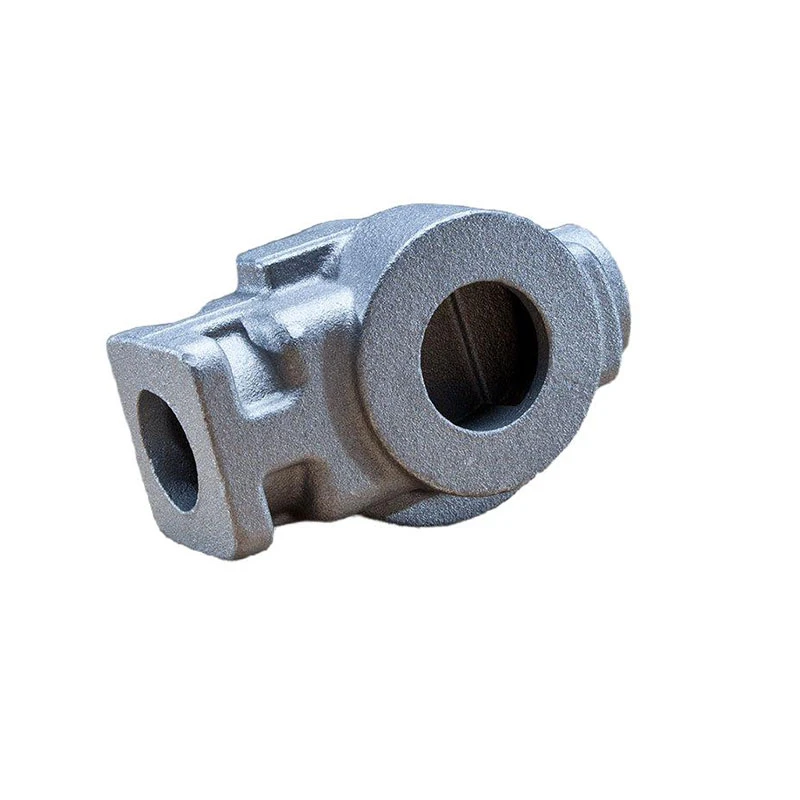Understanding the Key Components of the Sand Casting Process and Their Roles
Understanding the Parts of Sand Casting An Insight into the Process
Sand casting is one of the oldest and most widely used casting processes in the metalworking industry. It involves creating a mold from sand into which molten metal is poured, allowing for the production of complex shapes and structures. This article will delve into the various parts and stages of the sand casting process, providing a comprehensive understanding of its components.
1. Patterns
The pattern is a replica of the object to be cast, typically made from materials such as wood, metal, or plastic. Patterns are essential in sand casting as they determine the shape of the final product. They are slightly larger than the final product to account for the shrinkage of metal during cooling. Patterns can be single-piece or multi-part, depending on the complexity of the shape being created.
2. Mold
The mold is formed around the pattern and serves as the cavity into which molten metal is poured. It is created from a mixture of sand and binder materials, allowing it to hold its shape. Molds can be classified into two types green sand molds, which are made from moist sand, and dry sand molds, which are baked in an oven to harden the sand. The choice between these types depends on the requirements of the casting, including dimensional accuracy and surface finish.
3. Core
In cases where hollow sections are required, cores made from sand or other materials are used. Cores are placed inside the mold to create internal cavities in the final casting. They can be permanent or expendable, depending on whether they need to withstand multiple casting cycles. Cores are typically more fragile than the mold itself and must be carefully handled to avoid breakage.
4. Cores and Core Prints
Core prints are extensions on the pattern that provide a place for the core to sit in the mold. They ensure that the core is properly positioned, allowing the molten metal to flow around it and create the desired internal shapes. Core prints must be designed to facilitate easy removal of the core after the casting has solidified.
parts of sand casting

5
. Sprue and Runner SystemOnce the mold is prepared, a sprue is created to allow molten metal to enter the mold cavity. The sprue is connected to a runner system, which guides the molten metal from the sprue into the mold. The design of these components is critical, as it affects the flow of metal and the quality of the final casting. A well-designed sprue and runner system reduces turbulence and ensures even filling of the mold.
6. Pouring Basin
Located at the top of the sprue, the pouring basin serves as a reservoir for the molten metal. It allows for a controlled flow into the sprue and reduces the likelihood of turbulence, which can lead to defects in the cast product. The basin is designed to facilitate the pouring process and ensure that the metal flows smoothly into the mold.
7. Chill and Insulation
Chills are metal blocks added to specific areas of the mold to promote rapid cooling and control the solidification of the casting. They are strategically placed to direct the cooling process, preventing certain sections from freezing too quickly, which can lead to defects. Insulation materials may also be used to retain heat in certain areas, ensuring a uniform cooling rate throughout the casting.
8. Finishing Tools
After the casting has been cooled and removed from the mold, various finishing tools are employed to achieve the desired surface finish and dimensional accuracy. This may include sanding, grinding, and machining processes, depending on the specific requirements of the part. Finishing is crucial to meet industry standards and customer specifications.
Conclusion
Understanding the various parts and stages of the sand casting process is essential for anyone involved in manufacturing or engineering fields. Each component, from patterns to finishing tools, plays a vital role in creating high-quality castings. As technology continues to evolve, innovations in sand casting techniques and materials are likely to enhance efficiency and precision, ensuring that this ancient method remains relevant in the modern manufacturing landscape. Through this knowledge, engineers and manufacturers can better appreciate the intricacies of sand casting and apply best practices to produce superior cast components.
-
OEM Sand Cast Pump Valve Fittings - Baoding Hairun | Precision Engineering, CustomizableNewsJul.30,2025
-
OEM Sand Cast Pump Valve Fittings - Baoding Hairun Machinery And Equipment Trading Co., Ltd.NewsJul.30,2025
-
OEM Sand Cast Pump Valve Fittings - Baoding Hairun Machinery And Equipment Trading Co., Ltd.NewsJul.30,2025
-
OEM Sand Cast Pump Valve Fittings - Baoding Hairun Machinery|Precision Engineering&Fluid ControlNewsJul.30,2025
-
OEM Sand Cast Pump Valve Fittings - Baoding Hairun Machinery And Equipment Trading Co., Ltd.NewsJul.30,2025
-
OEM Sand Cast Pump Valve Fittings-Baoding Hairun Machinery And Equipment Trading Co., Ltd.NewsJul.30,2025















